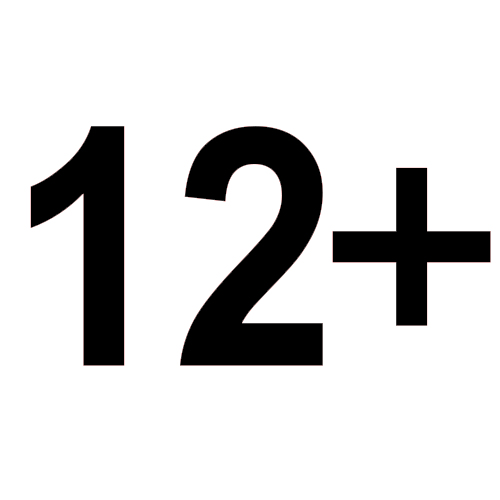Prevalence of Hypothyroidism among COVID-19 Survivors
The aim of the study was to determine the number of cases of newly diagnosed hypothyroidism, as well as to establish a link between the development of decompensated hypothyroidism and a previous COVID-19 infection among patients followed up by an endocrinologist over the past three years. As part of the study, the authors analyzed data from outpatient records of 317 patients diagnosed with “autoimmune thyroiditis, manifest hypothyroidism”, who were under the supervision of an endocrinologist at Belgorod State University Polyclinic from January 2021 to December 2023. The assessment of endocrine dysfunction of the thyroid gland was based on a comprehensive clinical, laboratory and instrumental diagnosis of patients. The obtained results were statistically processed using the IBM SPSS Statistic 26 program. The study revealed a significant increase in the number of cases of newly diagnosed hypothyroidism in 2023 compared to 2021, 26.7 % and 10.7 %, respectively, as well as in the number of patients with decompensated hypothyroidism among those previously observed by an endocrinologist for this disease. A more severe course of hypothyroidism in the outcome of autoimmune thyroiditis was established among patients who had suffered from COVID-19 infection. A history of new coronavirus infection is an undeniable risk factor for the development of thyroid pathology. Examination of thyroid function is mandatory in patients who have suffered a new coronavirus infection, including among patients with hypothyroidism with autoimmune thyroiditis who have been followed up by an endocrinologist for a long time.
Belousova O.N., Chupakha M.V., Nesterenko M.V., Belousov D.P. 2025. Prevalence of Hypothyroidism among COVID-19 Survivors. Challenges in Modern Medicine, 48(2): 146–155 (in Russian). DOI: 10.52575/2687-0940-2025-48-2-146-155. EDN: CNQXWS





While nobody left any comments to this publication.
You can be first.
Klimchuk A.V., Beloglazov V.A., Jackov I.A., Dvoryanchikov Ja.V. 2022. E`ndokrinny`e narusheniya na fone COVID-19 i pri postkovidnom sindrome [Endocrine Disorders in the Context of COVID-19 and Post-COVID Syndrome]. Obesity and Metabolism. 19(2): 206–212. doi: 10.14341/omet12853
Bornstein S.R, Dalan R., Hopkins D., Mingrone G., Boehm B.O. 2020. Endocrine and Metabolic Link to Coronavirus Infection. Nat. Rev. Endocrinol. 16(6): 297–8. doi: 10.1038/s41574-020-0353-9
Chen T., Wu D., Chen H., Yan W., Yang D., Chen G., Ma K., Xu D., Yu H., Wang H., Wang T., Guo W., Chen J., Ding C., Zhang X., Huang J., Han M., Li S., Luo X., Zhao J., Ning Q. 2020. Clinical Characteristics of 113 Deceased Patients with Coronavirus Disease 2019: Retrospective Study. BMJ. 26(368):1091. doi: 10.1136/bmj.m1091
Chen Y., Li X., Dai Y., Zhang J. 2022. The Association between COVID-19 and Thyroxine Levels: A Meta-Analysis. Front Endocrinol (Lausanne). 12: 779692. doi: 10.3389/fendo.2021.779692
Giovanella L., Ruggeri R.M., Ovсariсek P.P., Campenni A., Treglia G., Deandreis D. 2021. Prevalence of Thyroid Dysfunction in Patients with COVID-19: A Systematic Review. Clin Transl Imaging. 9(3): 233–240. doi: 10.1007/s40336-021-00419-y
Giovanella L., Ruggeri R.M., Petranoviс Ovсariсek P., Campenni A., Treglia G., Deandreis D. 2021. SARS-CoV-2-Related Thyroid Disorders: A Synopsis for Nuclear Medicine Thyroidologists. Eur. J. Nucl. Med. Mol. Imaging. 48(6): 1719–1723. doi: 10.1007/s00259-021-05316-0
Gong J., Wang D.K., Dong H., Xia Q.S., Huang Z.Y., Zhao Y., Chen X., Yuan F., Li J.B., Lu F.E. 2021. Prognostic Significance of Low TSH Concentration in Patients with COVID-19 Presenting with Non-Thyroidal Illness Syndrome. BMC Endocr. Disord. 21(1): 111. doi: 10.1186/s12902-021-00766-x
Hanley B., Naresh K.N., Roufosse C., Nicholson A.G., Weir J., Cooke G.S., Thursz M., Manousou P., Corbett R., Goldin R., Al-Sarraj S., Abdolrasouli A., Swann O.C., Baillon L., Penn R., Barclay W.S., Viola P., Osborn M. 2020. Histopathological Findings and Viral Tropism in UK Patients with Severe Fatal COVID-19: A Post-Mortem Study. Lancet Microbe. 1(6): 245–253. doi: 10.1016/S2666-5247(20)30115-4
Hoffmann M., Kleine-Weber H., Schroeder S., Kruger N., Herrler T., Erichsen S., Schiergens T.S., Herrler G., Wu N.H., Nitsche A., Muller M.A., Drosten C., Pohlmann S. 2020. SARS-CoV-2 Cell Entry Depends on ACE2 and TMPRSS2 and Is Blocked by a Clinically Proven Protease Inhibitor. Cell. 181(2): 271–280. doi: 10.1016/j.cell.2020.02.052
Jackson C.B., Farzan M., Chen B., Choe H. 2022. Mechanisms of SARS-CoV-2 Entry into Cells. Nat. Rev. Mol. Cell. Biol. 23(1): 3–20. doi: 10.1038/s41580-021-00418-x
Li M.Y., Li L., Zhang Y., Wang X.S. 2020. Expression of the SARS-CoV-2 Cell Receptor Gene ACE2 in a Wide Variety of Human Tissues. Infect Dis Poverty. 9(1): 45. doi: 10.1186/s40249-020-00662-x
Li W., Moore M.J., Vasilieva N., Sui J., Wong S.K., Berne M.A., Somasundaran M., Sullivan J.L., Luzuriaga K., Greenough T.C., Choe H., Farzan M. 2003. Angiotensin-Converting Enzyme 2 is a Functional Receptor for the SARS Coronavirus. Nature. 426(6965): 450–4. doi: 10.1038/nature02145
Madjid M., Safavi-Naeini P., Solomon S.D., Vardeny O. 2020. Potential Effects of Coronaviruses on the Cardiovascular System: A Review. JAMA Cardiol. 5(7): 831–840. doi: 10.1001/jamacardio.2020.1286
Rotondi M., Coperchini F., Ricci G., Denegri M., Croce L., Ngnitejeu S.T., Villani L., Magri F., Latrofa F., Chiovato L. 2021. Detection of SARS-COV-2 Receptor ACE-2 mRNA in Thyroid Cells: A Clue for COVID-19-Related Subacute Thyroiditis. J. Endocrinol. Invest. 44(5): 1085–1090. doi: 10.1007/s40618-020-01436-w
Tee L.Y., Harjanto S., Rosario B.H. 2021. COVID-19 Complicated by Hashimoto's Thyroiditis. Singapore Med. J. 62(5): 265. doi: 10.11622/smedj.2020106
Zou R., Wu C., Zhang S., Wang G., Zhang Q., Yu B., Wu Y., Dong H., Wu G., Wu S., Zhong Y. 2020. Euthyroid Sick Syndrome in Patients with COVID-19. Front Endocrinol (Lausanne). 11: 566439. doi: 10.3389/fendo.2020.566439